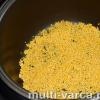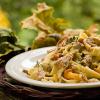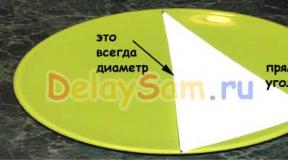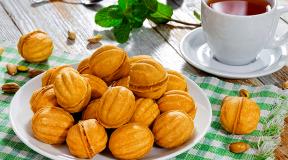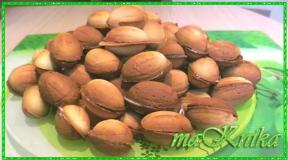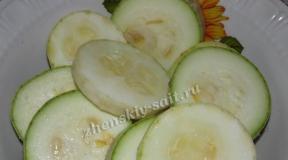Korablev L. Leonid Ships - from stories about ancient Icelandic witchcraft and the hidden people. and with a preface
Birthday August 17, 1971
modern Russian writer, runologist, Germanic philologist, linguist, specialist in Icelandic culture, artist
BIOGRAPHY
Member of the Union of Writers of Russia. Graduated from the Moscow Secondary Art School named after. Tomsky at the V.I. Art Institute Surikov. Certified sculptor. The first exhibitions of his graphic and sculptural works dedicated to the work of J. Tolkien were held in Moscow, and later, in 1994 - 1998, in San Francisco, Framingham, Minnesota, Boston (USA). Published in American magazines Eldalamberon, Tyaliе Tyelellieva, Ravenhill, Beyond Bree (graphics, articles). In 1996, the Leonid Korablev Gallery website was created in the USA. On the same site in 1997, he published a “Treatise on how one should look for ways to communicate with... true elves” and other works. Since 2000 it has been published in Russian. Author of 26 books and more than 40 articles in Russian, dedicated to Scandinavian and Germanic culture, mythology, Icelandic folklore, elves and runes. Some of his works have been translated into English, Icelandic and Swedish. Twice awarded by the Ambassador of Iceland to the Russian Federation, awarded a grant from the Aurtni Magnusson Institute of Manuscripts in Iceland for the promotion of Icelandic culture in Russia. Leonid Korablev's books are stored in the National Library of Iceland. He was awarded the “Gold Yesenin Medal” and a diploma “For faithful service to Russian literature.”
CREATION
Books and brochures
"The Graphic Magic of the Icelanders" (2002) ISBN 5-88875-029-8
"From Tales of Old Norse Witchcraft and the Hidden People" (2003) ISBN 5-9550-0008-9
"Runic spells and apocryphal prayers of the Icelanders" (2003) ISBN 5-88875-039-5
“Runology of Jón Olafsson from Grünník. Icelandic treatises of the 17th century" (2005) ISBN 5-88875-053-0
"Sorcerous Flight: Runic Astrology" (2005) ISBN 5-98047-002-6
"The Book of Elf Stories" (2008) ISBN 978-5-093055-089-4
"Ioun the Scribe-Sorcerer" (2009) ISBN 978-5-93055-130-3
"The graphic magic of Icelanders." Second edition, revised and expanded (2009) ISBN 978-5-9901627-2-3
"The Book of Elf Stories" (2011) ISBN 978-9979-70-919-0
"Anglo-Saxon magic. Icelandic Herbalist" (2010) ISBN: 978-5-91366-231-6
"Fourteen magical rune-rows of Iceland." Independent publication, Moscow, 2011
“Uti-setur” or open-air magic.” Independent publication, Moscow, 2011
"Icelandic magical futhork." Independent publication, Moscow, 2012
"The Elder Futhark: Runic Mythology." Independent publication, Moscow, 2012
"Runic cryptography: runes of the elves." Independent publication, Moscow, 2012
“L. Korablev’s journey through the elven places of Iceland (2008, 2011 and 2012).” Independent publication, Moscow, 2013
“Grey skin. The Main Magic Book of Iceland" (2013) ISBN: 978-5-904844-59-2
"Anglo-Saxon magic. Icelandic Herbalist”, second edition (2013) ISBN:978-5-904844-65-3
"Rune honey of Brynhild (Sigrdriva)." Independent publication, Moscow, 2014
“On fortune telling with runes in the ancient Germanic tradition. Two systems of fortune telling: Icelandic and Swedish."
Independent publication, Moscow (2013)
"Ioun the Scribe-Sorcerer." Independent publication, Moscow (2014)
“Grey skin. The main magical book of Iceland." second edition (2014) ISBN 978-5-600-00268-5
"The Magical Book of Galdrakver." Independent publication, Moscow (2015)
"Runic alphabet". Independent publication, Moscow (2015) ISBN 978-5-9907446-0-8
"Ancient Germanic Mythological Dictionary". Independent publication, Moscow (2017) ISBN 978-5-9907446-1-5
"Ancient Germanic Mythological Dictionary". Moscow, 2019, AST Publishing House, ISBN 978-5-17-109549-9. Second edition
"Runic spells and apocryphal prayers of the Icelanders." Independent publication, Second edition, M. 2019, ISBN 978-5-00095-711-0
Articles (research, translations, stories)
Galdra-becoming “One”
Icelandic undead draugs
Awakening of Angantir
Vjestein Oulason's book "Dialogues with the Viking Age", 1998
"Thor's Hammer" at the National Museum of Iceland
I became wise under the waterfalls
The book “Using Magic and Raising Spirits”
"Dark Runes" of Icelandic Folklore
"Germanic" heritage in Icelandic books
Apocryphal prayers of the Icelanders
The magical quarto book of Pastor Snorri of Husafell
Stephen Flowers (Flowers) “Stephen Flowers. The Galdrabok. "An Icelandic Grimoire"
Egil, horse and fish head
Old Swedish conspiracy of the 17th century
Lecture by Oxford professor J.R.R. Tolkien on the Old English poem “Beowulf”
German mythological parallels to Russian folklore
The Saga of Samson the Beautiful
Night trolls in Kerlingar-hotl
Source book on medieval Elves
Eddic writings of Tolkien (Eddurit Jons Tolkiens)
Comments on “The Saga of the Sandy Coast People”
Confusing letters (villuletur)
Icelanders in Iceland of the 21st century (autobiographical sketch)
Sleep Elves/Draum-Alfar
Who are the “aulvs” in the book “Independent People” by Halldor Kiljan Gvüdsjön Laxness or “stories about elves” from H. Laxness (20th century), quotes from the book
Addition to the list of names of Icelandic runes and letters, images of which were discovered by L. Korablev in Icelandic manuscripts of the 17th-20th centuries.
Icelanders in Russia of the XXI century (autobiographical sketch)
"Wolf" of Iceland - Arctic Fox
Orngaladion
"Runes" by Sir Thomas More
Icelandic omens
Charo-Leifi and the elves
How in the old days they celebrated the holiday of winter in North-West Europe
A treatise on how one should seek and find ways of communicating with the now hidden Light people, that is, with the true elves
Icelandic authors who wrote about elves during the “golden ages of elf belief” in Iceland
True elves of Europe
Icelandic folk calendar and calendars of other Germanic peoples
Runes of Speech and Mighty Runes
Slowly the cups of Son and Bodn will fill
Those who see through the mountains and hills
The witch who knew the white demons, for that is what they (the Easters) called the elves
Audio, video
7. Galdur (Wolfsblood “ALU”, 2007, Cynfeirdd, France)
Lecture on runes Part 1 "The unique magic of the futhark"
Lecture on runes Part 2a "Runes: the circle is closed"
Lecture on runes Part 2b "Runes: the circle is closed"
Lecture on runes Part 2c "Runes: the circle is closed"
Lecture on runes Part 3 “Icelandic runes and galdra-stavs”
Report “The diversity of Icelandic folklore”

Come under the full moon
Ring in the holy stones
And turn your back to the south,
And facing the North
And ask the runes three times
About what's far away
But don’t interfere with the will of Heaven
And trust your hand.
Then fall asleep in the forest among the grasses,
Trees and flowers,
But know this - Dreams have an insidious temperament
And don't forget about that.
Do not trill the nightingales of the forest,
Not the stomp of a boar -
The ringing of ice bells
Wake you up from sleep
It will break your heart too,
Like a cup at a feast;
From now on, fate leads you
Dangerous game
More gambling than cards or dice...
O mirror, say:
Where at the crossing of passions
There is a long way to go
To the forgotten northern country,
What spirits guard
Where is the one you saw in your dream?
Dancing in the snow
Seemed like a reflection of fire,
But the reflection was dark...
Ice cold souls flew together,
Signs of fate.
Walk, seeking the Way,
Through the Mirror - forward!
And know: the hidden can be found
Ice will help you.
And let them prophesy trouble
Signs for you
But the Raven and the Wolf will lead
You - to your Destiny.
Leonid Korablev.
A SMALL TREATISE ON HOW YOU SHOULD SEEK AND FIND WAYS OF COMMUNICATION WITH THE NOW HIDDEN LIGHT PEOPLE, THAT IS WITH THE TRUE ELVES.
As the ancients often said and wrote, the people of the elves, with the advent of the kingdom of people, began to gradually, as it were, disincarnate, turn pale and lose their physical forms visible to the eyes of Mortals. However, they have not yet turned into disembodied spirits and, thus, have not completely passed into the immaterial world. This means that we, the people, the second people after them, the elves, can try to look for ways to communicate with them. For they have ideal knowledge about the nature of being and about the complete history from the beginning of our world, including knowledge about what happened long before even those times that are now commonly called “proto-history.”
Lions taught people culture and the art of writing. They are able to penetrate with their minds into the future and read the thoughts of Mortals (alfar skilja, i.e. “elves feel, understand, foresee”; gefinn skilnings andi / ei sizt alfum og svo nornum... “given insight (deep understanding) spirit, not less for the elves, and also for the Norns..."). And in their appearance they are similar to ideal tall people, but, of course, not to “literary” winged dwarfs.
Also, according to the mystics of the Middle Ages, elves possess special books of Knowledge:
“people with the gift of spirit vision confirm that the interior design of them [i.e., elf-books] is similar to the old manuscripts of the Irs [Irish], only they are inscribed in golden letters; and everything there is of amazing colors, with elegant script and ornaments inside and outside. "
(Jón Gjudmundsson Scholar "Tidfordrif", 1644)
In addition, it is believed that the elves taught people, in addition to all of the above, also herbal treatment:
"It is said that through such communication [with the Scottish elves] knowledge of the medicinal powers of many herbs was acquired..."
(Patrick Graham "Descriptive Sketches... of Perthshire", 1806)
We find exactly the same idea among the Celtic inhabitants of Wales. (See W. Sikes, J. Rhys)
Also, as the ancients mention, elves, although now invisible, are able to help, or even can save people friendly to them in a moment of extreme danger. (See J. Gudmundsson, R. Graves)
Countries where meetings between Mortals and Elves are now possible are the following: the most remote areas of Iceland, Wales, Ireland, Middle England, Scotland, the Faroe Islands, Orkney Islands, perhaps, but quite rarely, somewhere in Scandinavia, the South of Germany (?), North -west of Russia: the area below Arkhangelsk, Karelia, Valaam, Lake Onega, the coast of the White Sea, [its name among the Vikings in ancient times was GAND-vik “Magic Bay”, compare GAND-alfr “Magic (“elven”) creature with a magic wand ".]
...At that time, throughout the entire territory of Europe, including, however, only the western part of Russia, the sluggish Il-korindi [Elves] spoke their own dialects of the common Elvish language...
[From the early drafts of Professor J. Tolkien]
Elves do not live in the “New World” (America), the East, Africa and Siberia. There is a lot of evidence about this. Especially Irish (Celtic) ones about North America. (The most unbearable conditions for spiritual existence.)
Obviously, when trying to communicate with elves, it is necessary to comply with certain conditions, such as: special forms of abstinence, the absence of metal objects (except silver). Some (semi-)precious stones help. Here it is appropriate to recall the experience of the Icelandic mystics and their marvelous stones (natturu-steinar): Diacodos, etc. There are also ideas about using various other means in this procedure (for example, four-leaf clover, a special eye ointment, etc.). Perhaps some magical “staves” will help: band-run(ir) “a complex sign made up of different runes” [literally “a bunch of runes”]; galdra-stafur "a sign of several magical symbols combined"). [Jón from Grunna-vik, for example, writes that two band-run(s) “GAPALDUR” and “GINFAXI” were cut in order to enter the hills to the elves. See J. Arnason and "Galdrabok" edited by N. Lindqvist and S. Flowers.]
Now let's move on to the main thing. WAYS OF COMMUNICATION WITH THE HIDDEN PEOPLE.
In Iceland: four ways are mentioned: to compose a praise song (ljod); use the magic rod sproti; try “bjoda alfum heimum” - the formula of the ancients; perhaps uti-setur (?!).
In Ireland and Scotland: traditional ways of getting inside the Elven Hills are mentioned. (Dun-shi, Rath).
In ancient Scandinavia: alfa-blot (?).
In Wales: the possibility of ending up half in an elven cylch glas or other enchanted places is mentioned.
Or compare Professor Tolkien’s ideas that the elves themselves will come to a person in his consciousness or dream. (See below.) But, nevertheless, it seems that this happens extremely rarely.
Read more.
Iceland. According to the manuscripts of Jón Gvüdmundsson the Scholar (17th century), it is enough to compose a song of praise in honor of the elven family and pronounce it accordingly in the right place - then you will receive an answer.
“Because almost all trolls and elves are inclined to revenge,” said Vilhjalm, “if they are treated badly or insulted, but they no less try to repay kindness if they are treated with respect.”
(Icelandic "Saga of Sigurd the Silent", ZM. 6, 14 PERSONS)
The form of the song must be either magical, i.e. ljod (compare the mentions of this form in the description of the magical arts of Odin), or in the style of lilju-lag (old name hrynhenda), ferskeytt visa; thulur. Such a song should have an eight-syllable poetic stanza instead of the usual six-syllable, three-time alliterative repetition. As the son(?), grandson(?) of John the Scientist told (he composed three such songs): Huldu-folks mal (“Speech about the Hidden People”), Theim godu jardarinnar innbuum tilheyri thessar oskir (“May these [good] wishes be fulfilled for the good people [elves]") and Ljuflings-kvaedi ("Song of Ljufling").
The first two have been preserved in manuscripts only in fragments; the last, unfortunately, has been lost. The most recent example of the use of the rhyming form ljod and a favorable response to it is evidence recorded in the Icelandic collection of stories about elves and magicians by J. Arnason. (see there "Grims-borg", or in my translation "Rocky Castle of Grim")
Since ancient times, the most famous place in Iceland where you can, if you're lucky, meet elves is Skagafjordur ("Protruding Fjord" in the north of this island). For evidence of this, see the “Saga of Kormak” (Kormaks saga, approx. 11th century): “holl einn... er alfar bua i”; in the “Saga of Gudmund Arason the Good” (Gudmundar saga goda, 13th century): “It was a Wonderful Winter... two suns [stood] in the sky at the same time, and people saw how the elves and other wondrous people passed together in multitudes in Skagafjord"; and in the "Modar Saga" (Modarz saga, 15-16 centuries).
Apparently, it is necessary to pronounce a magical appeal to the elves in some accordance with the more ancient description given in the “Saga of Eirik the Red” (Eireks saga rauda), because the scenes and motifs in this saga are almost identical to the above-mentioned testimony about the elves "Grims-borg": "Meanwhile, Thorhall the Hunter disappeared ... (the people) found Thorhall on the top of some rock. He lay and looked at the sky, his mouth open and flaring his nostrils and muttering* something... A little later a whale washed up on the shore... Then Thorhall the Hunter said: "... I received this for the poems I wrote in honor..." (* "Mummured" from Icelandic thylja "to hum something quietly, monotonously and without breaks or pauses." Compare the poetic-magical form thulur, also galdra-thulur.)
(talkn-)SPROTI: A special rod-rod made of thin whale bone with copper trim at the end. With its help, you can try to get to the elves in their hidden houses, which seem like rocks and hills to the uninitiated Mortal. (Compare Gaelic ideas about the same thing below.) Moreover, it is necessary to know and pronounce at the right time a special magical formula. You should also have tied up sticks with runes cut into them (see above). For examples and more detailed information about sproti, look for in the treatises of Jón the Scientist (17th century), Jón Eggertsson (17th century), in the “Guide to Iceland” by Eggert Olavsson (18th century), in the collection of recent evidence about the elves of J. Arnason.
EXTRACTS FROM SOME WRITINGS OF THE ABOVE AUTHORS.
Jon the Scientist(?):
“It was believed that some people were so deeply knowledgeable that they knew how to open the covers of the earth and go inside. They entered both hills and rocks, talked there with the people living inside, and accepted gifts from them (many saw these gifts ), and there, [having learned] a lot about the secret and hidden, they became wiser."
["Tidfordrif" (?), 1644 W.]
Jon Eggertsson:
“It was said about many that they master the art of opening the covers of the earth [rocks] and entering inside; and there they communicate with the Leuvlings (elves, who are so called); they eat and drink with these people there inside; besides, they become wise, and in addition from they receive gifts."
["Um runakonstina": "On runic skill", 17th century]
From the collection of Jón Arnason:
“They walk like this until they approach one hill. Bjorn then pulls out the rod from his mouth and hits the hill with it. After that the hill opens, and they see as if a door has opened in it...”
["Holgongur Silunga-Bjarnar" eftir Olafur Sveinsson i Purkey, UFT-GShch 81-82];
“Then the bishop takes the rod from his hand, leaves the tent, draws the rod three circles around the tent and then goes to the elves.”
["Brynjolfur biskup...", UFT-GShch 57-58];
“They go to the outer edge of the cultivated field, near the farm, to one hill there. The priest hits the hill with a rod from the front. The hill then opens up...”
["Hol-gangan" (M.G.), UFT. 559].
One of the variants of the magical formula necessary for use together with sproti may be a phrase in the elven language “Sindarin” reconstructed by Professor Tolkien, said by the magician Gandalf at the gates of the underground country of Moria.
You need to be somewhat more careful with the following two, not entirely clear now, methods: “bjoda alfum heimum” (i.e., inviting elves into your own home on Christmas night or New Year’s Eve) and uti-setur on the same holidays, plus the night before the summer solstice.
In the first case (i.e. bjoda alfum heimum), at the designated time, they light all the lights in the house, tidy everything up, set the table, and, walking with light around the house and all the buildings adjacent to it, pronounce the following magical formula three times elf invitations: "komi their sem koma vilja, fari theim sem fara vilja, mer og minum ad mein(a)-lausu!" or "veri their sem vera vilja, fari their sem fara vilja, mer og minum ad skada-lausu!" (“Enter boldly those who wish it and come from everywhere those who intend to come, but do not harm me or what I have!) Then they wait. This procedure may be associated with a certain danger, because there is a high probability the arrival of Dark Elves (Dokk-alfar), evil spirits (ill-vaettir) or even undead (draugar). In this case, a fatal outcome is possible for those who invited. However, see several testimonies from the collection of J. Arnason about what they do when they find themselves in such a situation. position
Uti-seta [pl. number uti-setur] - (literally "to sit outside"). Even less certain in this case. Usually people settled down on the night of Christmas, New Year or before the summer solstice right in the center of the crossroads of four roads somewhere in the mountains, thus preventing the movement of elf mounted troops at this time. If you're lucky, the elves will appear from one of the four roads, and the main thing here is to remain silent, no matter what they do. The price for violating the ban on uttering at least one word in response to the elves is madness. (Although in some cases with the ability to foresee the future; see some evidence from the collection of J. Arnason.) The unclear side of this activity is that in the old days people believed that, in addition to elves, there was a high probability of the appearance of night demons and spirits of the dead. Thus, it looks a lot like necromancy (death magic). IN THIS CASE, BE AWARE OF "UTI-SETA" LIKE FIRE. At the cost of the immortality of the soul. In all Old Scandinavian (early Christian) laws that have come down to us, the occupation of uti-setur(s) is prohibited. But it is quite possible that there were still different types of uti-seta - some for summoning elves, others for manipulating necromancers. In any case, the descriptions of the necessary rituals at the crossroads when waiting for the elves and calling the dead are somewhat different. (For example, the usual uti-seta can be performed almost at any time of the year at night?) See again the collection of stories by J. Arnason. Also compare the mention of uti-seta in the Saga of the Orkney Earls
Leonid Leonidovich Korablev(born August 17, 1971, Moscow, RSFSR) - modern Russian writer, runologist, Germanic philologist, linguist, specialist in Icelandic culture, artist.
Until the age of seventeen, he bore the surname Matsuev, after which he bore the name Korablev (the actual translation from German into Russian of the surname Schipper on the maternal side). Graduated from the Moscow Secondary Art School named after. Tomsky at the V.I. Art Institute Surikov. Certified sculptor. Member of the Union of Writers of Russia. The first exhibitions of his graphic and sculptural works dedicated to the work of J. Tolkien were held in Moscow, and later, in 1994 - 1998, in San Francisco, Framingham, Minnesota, Boston (USA). Published in American magazines Parma Eldalamberon, Tyaliе Tyelelliéva, Ravenhill, Beyond Bree (graphics, articles). In 1996, the Leonid Korablev Gallery website was created in the USA. On the same site in 1997, he published a “Treatise on how one should look for ways to communicate with... true elves” and other works. Since 2000, he has been publishing in Russian (author of nine books on Old Icelandic/Scandinavian topics). Twice awarded by the Ambassador of Iceland to the Russian Federation. Books by Leonid Korablev are in the National Library of Iceland.
Books
- Voices of the trees. Anglo-Saxon magic. Cartomancy
Articles (research, translations, stories)
- There are three kinds of Elves under the sky (“Tyaliё Tyelellieva”, N 9, 1995: 8-11) [article]
- Northern witchcraft and pagan practices in medieval Scandinavian laws (“Myths and magic of the Indo-Europeans”, N 11, 2002, pp. 76-85) [article]
- The True Elves of Europe (in English The True Elves of Europe) [article]
- True Elves of Europe (Unfallen Elves of Tolkien) [article]
- A treatise on how one should seek and find ways of communicating with the now hidden Light people, that is, with the true elves [treatise]
- How in the old days they celebrated the holiday of winter in northwestern Europe [story for children]
- A brief introduction to the first edition of the book “From Stories about Old Icelandic Witchcraft and the Hidden People” 1997 [article]
- Ancient Europeans, trees, herbs, magic [article]
- The Saga of Samson the Beautiful (Samsons saga fagra) [translation]
- Sea King Ivar Volnogon [story]
- Moscow Viking Igor Olegov [story]
- Concise Old Germanic Mythological Dictionary [dictionary]
- Experience the Old Norse World System as an ImageMap [interactive note]
- Icelandic graphic magic [article]
- The witch who knew the white demons, for that is what they [the Easterners] called the elves [report]
- Gifts of the Elves to Men [note]
- “Spirits of Iceland” (doc. film) (Spirits of Iceland) [translation and comments]
- Those who see through the mountains and hills (Þeir sem sjá í gegnum holt oc hola) [report]
- Runes of speech and Mighty runes (Málrúnir og rammrúnir) [article]
- Tambourine of the lower world and Gand-alf? (Shamanic drum and Gand-álfr) [note]
- Slowly the cups of Son and Boðn will fill (Seint munu fyllast Són og Boðn) [translation]
- Icelandic authors who wrote about elves during the "golden ages of belief in elves" in Iceland in the 16th-18th centuries. (Álfa-öldin) [catalogue]
- Icelandic folk calendar and calendars of other Germanic peoples [article]
- Explanatory articles on L. Korablev's graphics [notes]
- Charo-Leifi and the Elves (Galdra-Leifi og álfar) [note]
- About the signs of the waxing moon (Um merki á komandi túngli) [translation]
- Riddle [riddle]
- Icelandic dream book (Drauma útþýðing/drauma-ráðningar) [translation]
- Icelandic omens (Kreddur) [translation]
- Icelandic mythological idioms [note]
- The “runes” of sir Thomas More [note]
- From the book about Jón Guðmundsson the Scientist (Jón the Scribe-Sorcerer) (Ævisaga Jóns Guðmundssonar lærða) [excerpts from the book]
- Elvish traditions in Kristinn E. Andresson's pro-communist book “Modern Icelandic Literature” 1918-1948 [article]
- "Wolf" of Iceland - Arctic Fox [article]
- Orngaladion [article]
- Icelanders in Russia of the XXI century [autobiographical sketch]
- Icelanders in Iceland of the XXI Century [autobiographical sketch]
- Fourteen magical rune rows in Iceland [article]
- Addition to the list of names of Icelandic runes and letters, images of which were discovered by L. Korablev in Icelandic manuscripts of the 17th-20th centuries [article]
- Sleep Elves (Draum-Álfar)[article]
- Confusing letters (villuletur)[article]
Korablev L.L. - about the author
Until the age of seventeen, he bore the surname Matsuev, after which he bore the name Korablev (the actual translation from German into Russian of the surname Schipper on the maternal side). Graduated from the Moscow Secondary Art School named after. Tomsky at the V.I. Art Institute Surikov. Certified sculptor. Member of the Union of Writers of Russia.
The first exhibitions of his graphic and sculptural works dedicated to the work of J. Tolkien were held in Moscow, and later, in 1994 - 1998, in San Francisco, Framingham, Minnesota, Boston (USA). Published in American magazines. In 1996, the Leonid Korablev Gallery website was created in the USA. On the same site in 1997, he published a “Treatise on how one should look for ways to communicate with... true elves” and other works.
Korablev L.L. - books for free:
Runic magic played an important role in the culture and life of the northern Germanic peoples. The oldest runes of the north known to us date back to the third century AD. People believed that the runes themselves were invented by the ace - the patron of magic - Odin...
In the minds of modern people, there is a strong opinion (and, accordingly, an idea) that elves are “small, stupid and with wings like butterflies; and they certainly relate to the childhood period of a person’s life...”
Try...
Possible book formats (one or more): doc, pdf, fb2, txt, rtf, epub.
Korablev L.L. - books are fully or partially available for free downloading and reading.
Leonid Korablev
From stories about Old Icelandic witchcraft and the Hidden People
Translation from Icelandic
and notes
Leonid Korablev
Under general editorship
and with a preface
Anton Platov
BBK 86.4 I32
I32 From stories about ancient Icelandic witchcraft and the Hidden People / Trans. from ancient Iceland, - M.: Sofia Publishing House, 2003. - 176 p.
ISBN 5-9550-0008-9
© L. Korablev, text, comments, 2003 © A. Platov, preface, 2003 ISBN 5-9550-0008-9 © VD “Sofia”, 2003
WONDERFUL PEOPLE (Editor's Foreword)
They were called differently. Marvelous, Ancient, Elder, Tall; elves, alvas, aulvas, elbs; fi, firey; seed or shi; Residents of the Hills or, finally, just Those. The real old names are now almost forgotten, almost everywhere replaced by English elf and French Faerie. And those names that were used before were hardly true - if only because they were invented by the people themselves: in Scotland they were called Daoine Sithe,"Wonderful People", in Wales - Tylfyt Tag,"Wonderful Births", in Ireland - Huldu, Huldu Folk,"Ancient People" ...
Ideas about elves - let’s take this name here for brevity - ideas about elves were very “tenacious” in Europe, despite both Christianization and the progress that was taking leaps and bounds. In the British outback, for example, they talked about elves back in the late 19th - early 20th centuries:
What? Tell you about elves? Well, elves, they are different. I don’t know where, but here in Sussex the old elves - those who lived in the forests and underground - left a long time ago. It is said that they liked to settle in old ruins. Here in Sussex, these elves once lived on the ruins of Barlow Castle - this is near Arlington. Now almost nothing remains of the castle itself - only fragments of walls here and there - but at a time when each country had its own king, it was a very famous and famous place. But no matter what it was before, a hundred years ago none of the local residents dared to come close to the ruins after it got dark - they were afraid of the elves.
They also say that in the past, at midnight on the eve of the summer solstice, dancing elves could be seen on the tops of Tubbery Hill and Gissbury; There were also fortresses there a long time ago. And at one of the old burial grounds, they once even saw an elven funeral procession...
What can I say, that was a long time ago! Now I’m already quite an old man, and when I was still just a boy, the old people of that time said that these elves did not like the way life was changing in England, and they were simply outraged by the new manners of people. Already in those days there were fewer and fewer of them, and their last refuge was the last in Sussex, and perhaps in all of England! - was Harrow Hill. Harrow Hill is a large hill near Patching where there are old flint mines and where there was once a fortress. Maybe the elves would still have lived there, but somehow learned people - archaeologists - arrived and began to excavate Harrow Hill. These were not interested in any elves; they laughed when we told them about the Magic People... Well, then these last elves were offended to death and left forever...
One old woman once told me that it is from the elven dances that magic rings remain in the grass - you know, such circles of trampled grass. And what if you walk around such a ring nine times on the first night of the new moon, then you can hear their music from underground, which cannot be more beautiful. What's the point - those elves are no longer here... 1
There is a great variety of materials related to elves - if we understand by this term the Marvelous People in general, and not narrowly “supernatural creatures of Anglo-Saxon and German folklore”: these are texts of European legends and traditions, and descriptions in chronicles, and folklore evidence of recent centuries , and much more. And yet, it’s better to start getting acquainted with the Marvelous People with fairy tales that keep the very spirit. ancient tradition associated with the elves.
With all the huge variety of fairy tales related to elves, some of them occur so often, and among a variety of peoples they have so much in common that they can easily claim to be considered classics of fairy tales about the Marvelous People. Perhaps some of the most common such stories are those that once made it possible to add one more to a number of names - Marvelous, Ancient, Tall: Fair.
In Ireland, this tale is told about the elves of the ancient Knockgraton Hill 2. It is as if there once lived in the Eherlow Valley a poor hunchback nicknamed Fox Tail, kind and hard-working, but so terrible because of his hump that people avoided him. One day he happened to be returning from the town of Cahir, where he was selling baskets woven with his own hands, and night found him at the foot of Knockgrafton Hill...
He was tired and exhausted, and he still had to trudge a very long way, he would have had to walk all night - one could simply fall into despair just from the thought of it. So he sat down by the hill to rest and looked sadly at the moon.
Soon the discordant sounds of some wild melody reached his ears. Short Fox Tail listened and thought that he had never heard such delightful music before. It sounded like a choir of several voices, and one voice merged so strangely with the other that it seemed as if only one voice was singing, and yet all the voices made different sounds... 3
The beautiful foam coming from the Hill so captivated the hunchback that he himself did not notice how he began to quietly sing along and even added a few of his own words to the elven song - and these were elves, of course.
Suddenly everything began to spin in front of Fox Tail, and now he was standing in a beautiful banquet hall inside the Hill, and the elves surrounding him told him that rarely had any mortal managed to pick up the elven singing so beautifully. But then the elves parted, and a large procession came forward. The Majestic Lady, walking at the head of the procession, approached the short hunchback and uttered the words of the spell:
Fox Tail! Fox Tail!
Your word is by the way,
Your song is in place
And you yourself - to the yard.
Look at yourself, rejoicing, not mourning:
There was a hump, and the hump is gone 4.
And as soon as the words had finished, Fox Tail felt that his terrible hump was disappearing from his back. And then…




